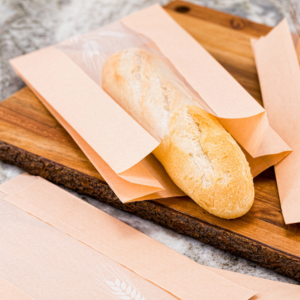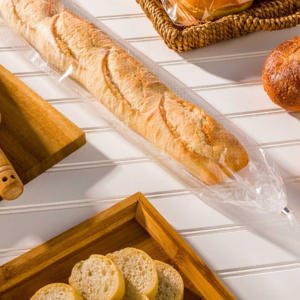Bread is one of the most commonly consumed food items in the world. It
is a staple food in many cultures and is used in a variety of dishes.
However, proper storage is important to keep bread fresh and prevent it
from going stale. In this blog, we will discuss how to properly store
bread.
Keep Bread In A Dry Place
Bread is sensitive to moisture, and excess humidity can cause it to become stale or moldy, ruining its freshness and taste. Bacteria thrive in humid environments, increasing the risk of contamination, which can pose a health hazard to consumers. Moisture can also make bread soft and mushy, resulting in poor texture and appearance. Consequently, storing bread in a dry place, preferably in a paper or plastic bread bag, can help to reduce moisture and prevent contamination, which preserves its quality and freshness.
Keeping bread in a dry place helps to extend its shelf life. Bread can go stale within a few days if exposed to air or moisture, leading to a loss of flavor, texture, and aroma. However, storing bread in a dry place can help slow the staling process and maintain its freshness for a longer period. Fresh bread is essential for making delicious sandwiches and toast; having it available longer can save you money and time.
Store Bread At Room Temperature
Keeping bread at room temperature has a significant impact on its taste, texture, and overall quality. Many people tend to store bread in the refrigerator, believing it would help maintain its freshness for a more extended period. However, contrary to this assumption, refrigeration can accelerate the staling process, making the bread quickly lose its delightful taste and texture.
Bread is a bakery product that contains yeast, which means it does not need to be stored in a refrigerator to prevent it from going stale. Refrigeration of bread causes the starch molecules in the flour to crystallize rapidly, which leads to the bread becoming hard and stale within a short period. Moreover, when bread is exposed to cold temperatures, it attracts moisture from the air, which results in it becoming soggy and chewy.
Keeping bread at room temperature also enhances its flavor, giving it a pleasant aroma that most people adore. When the bread is stored outside the refrigerator, it allows the bread to breathe, which helps it retain its unique flavors and aroma.
Use Bread Bags
Putting bread in bread bags is a practice that has been followed for ages. It may seem like a small step, but it has a significant impact on the quality and longevity of the bread. Bread bags are designed to provide the right environment for storing bread, which is crucial to keep it fresh and delicious.
Bread bags act as a barrier between the bread and the environment, protecting it from external factors that can cause it to spoil prematurely. They prevent moisture from accumulating around the bread, which can cause mold growth and unsavory smells. Bread bags also help to prevent the bread from drying out, which can make it hard and stale.
Types of Bread Bags
Bread bags are an essential component in the packaging and preservation of bread. They come in different types, each designed to cater to specific needs.
Paper Bread Bags
When it comes to storing bread, using paper bread bags is one of the best options available. There are several reasons why paper bags are an ideal choice for bread storage. Firstly, paper bread bags are biodegradable and eco-friendly. Paper bags also allow the bread to breathe. Bread needs to be in an environment where it can maintain moisture levels. When stored in other containers, the bread tends to lose moisture, resulting in either dry or overly moist bread. Paper bread bags prevent this from happening and allow the bread to maintain its freshness for longer periods.
Using paper bread bags helps to enhance the visual appeal of the bread. When you store bread in a paper bag, it looks much more appealing than when stored in a bread box or other bread packaging. A beautifully designed paper bag has the potential to make the bread look more attractive, enticing consumers to purchase it.
Plastic Bread Bags
Plastic bread bags serve as an excellent protective barrier against external elements that could potentially compromise the freshness and quality of bread. Such external elements include air, moisture, and bacteria, which can cause mold growth, spoilage, and even harmful microbial contamination if unprotected.
Moreover, plastic bags help in preserving the nutritional value, texture, and taste of bread. By keeping harmful elements such as moisture and air out, the bread can maintain its freshness and nutritional value for longer periods, ensuring that it is in optimal condition when consumed. Plus, plastic bags are recyclable, which allows for reduced waste and environmental impact. Additionally, they are lightweight and require less space, making them easier to transport and store.
Keep It Fresh
Proper storage is essential for keeping bread fresh and preventing it from going stale. Whether you use plastic or paper bread bags, make sure to keep bread in a dry place at room temperature. Avoid putting bread in a refrigerator, and try not to slice bread until you are ready to use it. By following these tips, you can enjoy fresh bread for longer.








